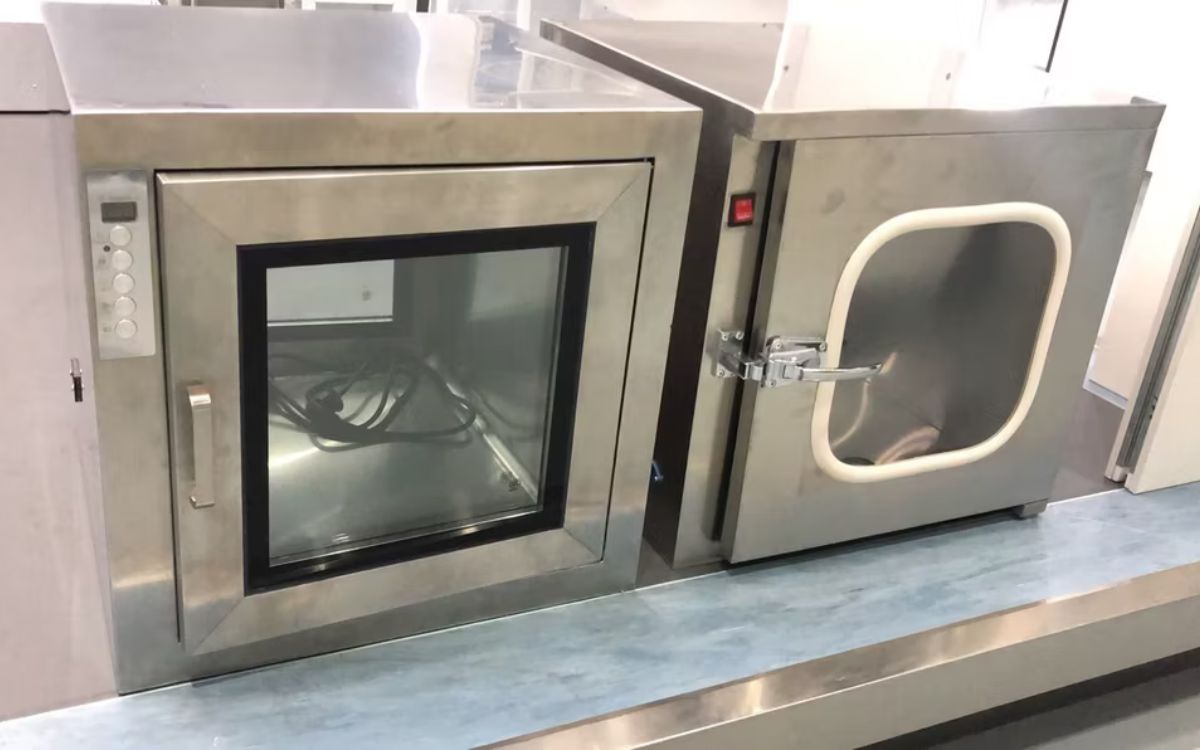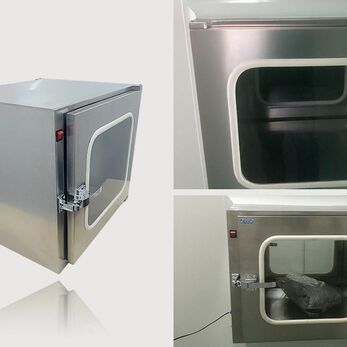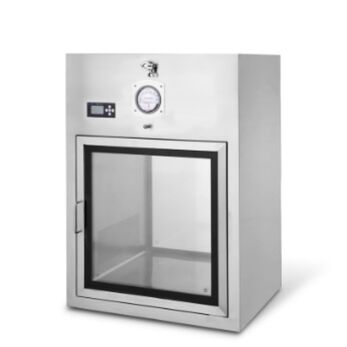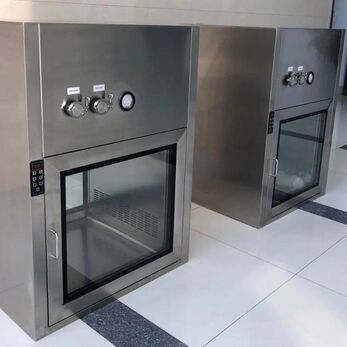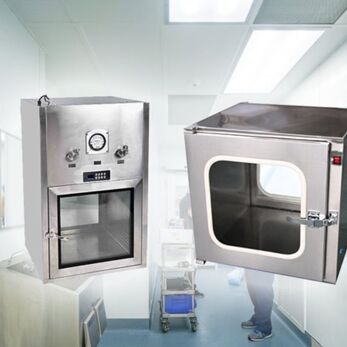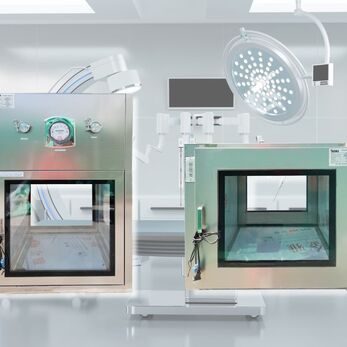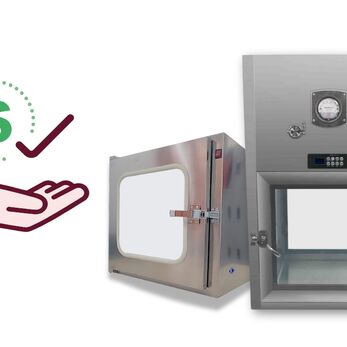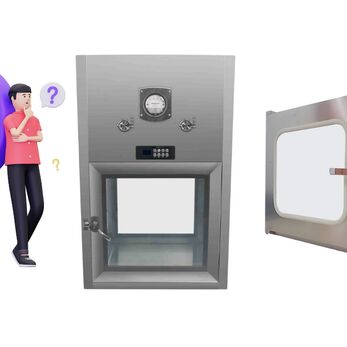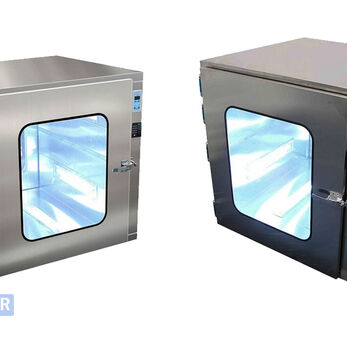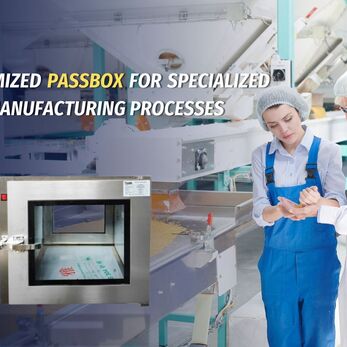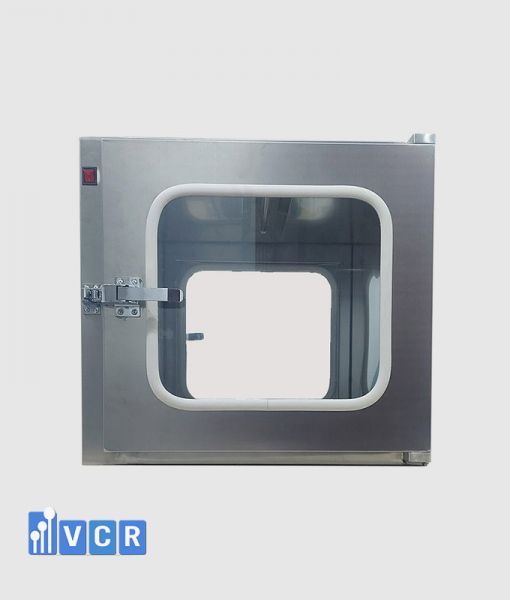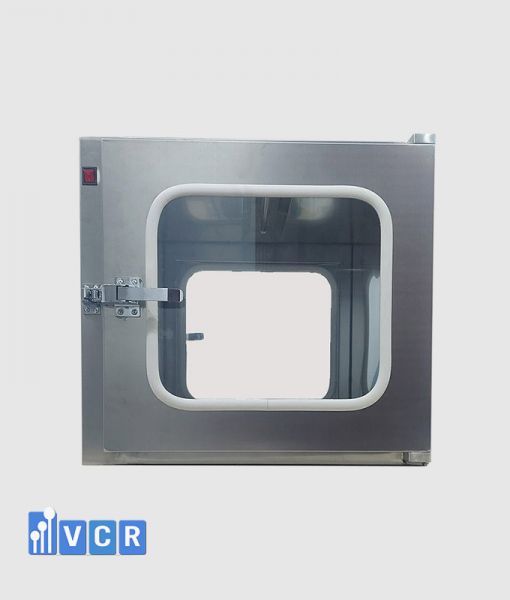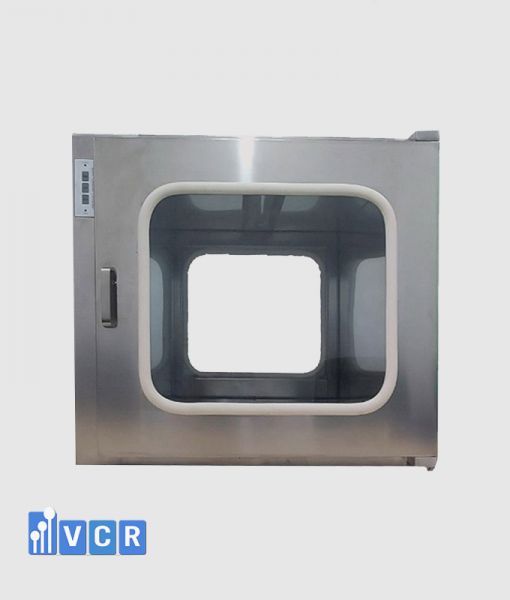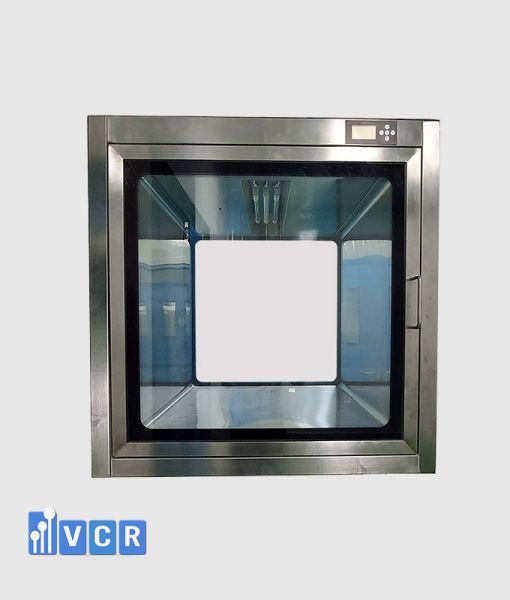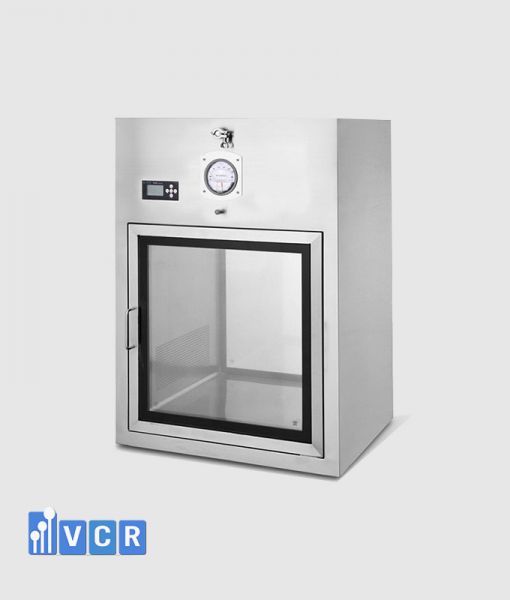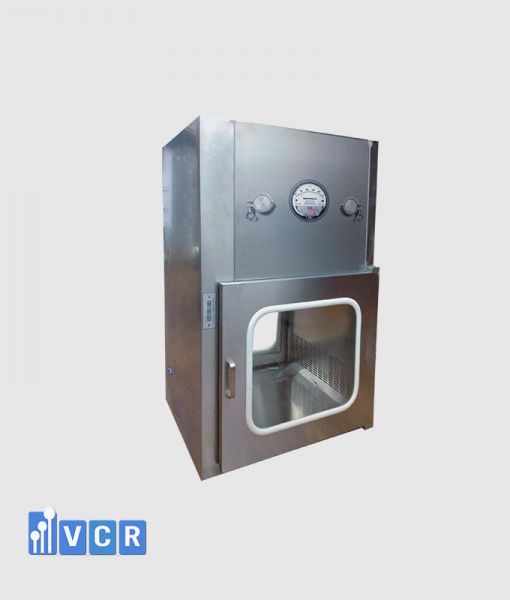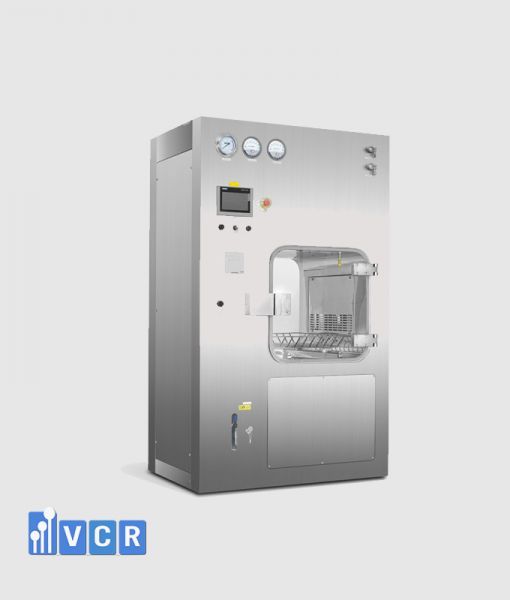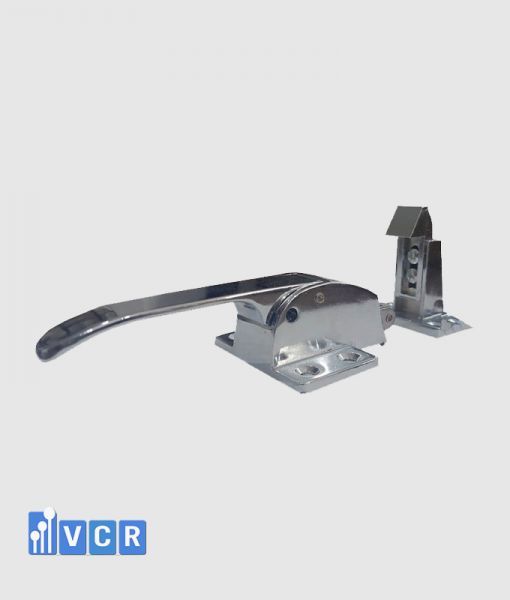In the clean room system, Pass Box plays a key role in conveying items without affecting pressure and air flow. So what are the advantages and disadvantages of mechanical Pass Box and electronic Pass Box? The article will analyze in detail the characteristics and application capabilities of each type.
- 1. What is a Pass Box? Basic Classification
- 2. Comparison Between Mechanical and Electronic Pass Boxes
- 3. Which Type to Choose for Each Industry?
- 4. When Should You Prioritize Using an Electronic Pass Box?
- 5. Common Mistakes When Selecting a Pass Box
- 6. Frequently Asked Questions
- 7. Need Help Choosing the Right Pass Box? VCR is Here to Support You
1. What is a Pass Box? Basic Classification
A Pass Box (also known as a material transfer hatch) is an essential device in cleanrooms, designed to transfer materials between two areas with different cleanliness levels without disrupting airflow or pressure. It helps prevent cross-contamination and ensures environmental control in facilities complying with GMP, ISO 14644, or HACCP standards.
Main functions of a Pass Box:
- Minimize the number of times main cleanroom doors are opened
- Improve operational efficiency during material input/output
- Ensure biosafety or cleanliness according to classified zones
Basic classification of Pass Boxes:
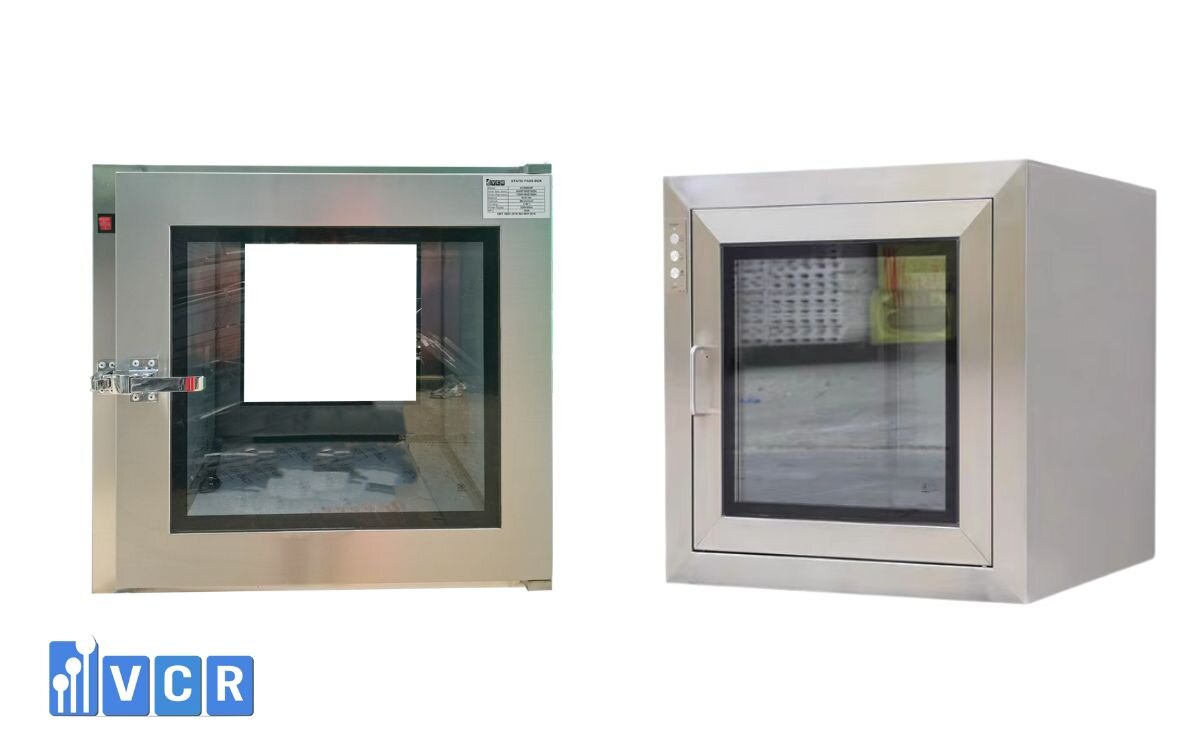
Depending on the operating method, Pass Boxes are categorized into two main types:
1.1. Mechanical Pass Box
- Uses a mechanical interlocking system, allowing only one door to open at a time
- Operated manually: users open/close doors by hand
- Simple structure, easy maintenance, cost-effective
- Suitable for low-traffic areas with moderate contamination control requirements
1.2. Electronic / Automatic Pass Box
- Equipped with electromagnetic locks or interlock systems controlled by an electronic board
- Automatically controls door status, can connect to alarms, indicator lights, sensors...
- Some models include UV lamps, HEPA filters, usage counters, or logging functions
- Commonly used in pharmaceutical, electronics, and high-grade cosmetics cleanrooms where strict control is required
Both types may be equipped with air filtration, UV sterilization, or even integrated Air Shower functionality as needed.
2. Comparison Between Mechanical and Electronic Pass Boxes
Choosing between a mechanical and an electronic Pass Box depends on the level of control, budget, and industry requirements. The table below outlines the key differences:
|
Criteria |
Mechanical Pass Box |
Electronic Pass Box |
|
Operating method |
Manual, with mechanical interlock |
Automatic, controlled via intelligent electronic system |
|
Safety |
Depends on user operation; risk of both doors opening |
Electronically interlocked, minimizing operation errors |
|
Cost |
Lower, suitable for budget constraints |
Higher, due to integrated circuits, sensors, status display |
|
Common applications |
Small cleanrooms, auxiliary areas |
GMP-certified zones, weighing/filling/packaging areas |
|
Maintenance & repair |
Simple, fewer failures, easy part replacement |
More complex, requires skilled technical support |
Note: Both types can be enhanced with UV lamps, HEPA filters, or recirculating fan filters depending on the cleanroom standards and specific applications.
See more: Optimizing Pass Box Requirements in Negative Pressure Environments
3. Which Type to Choose for Each Industry?
There is no one-size-fits-all Pass Box. The choice between mechanical and electronic types should be based on the operational characteristics and regulatory standards of each industry.
Pharmaceutical Industry - GMP
- Recommendation: Prefer Electronic Pass Box
- Reason:
- Strict compliance with GMP/EU-GMP is mandatory
- Proper door operation procedures must be enforced
- Electronic models reduce manual errors and enable usage logging for audits
Food Industry - HACCP
- Recommendation: Consider Electronic Pass Box, especially for packaging areas
- Reason:
- High contamination risk if product flow is not properly managed
- Electronic Pass Boxes ensure single-door operation, reducing airborne contamination
- Mechanical types may still suffice for raw processing zones
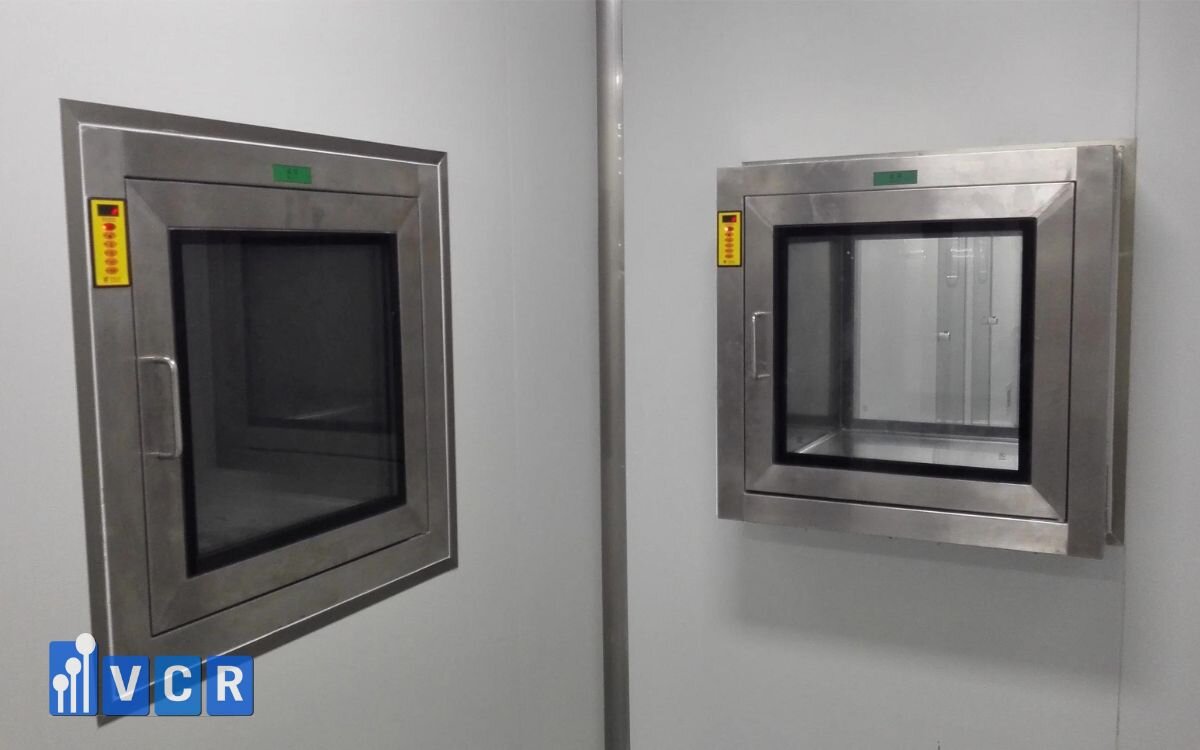
Cosmetics Industry - ISO 22716
- Recommendation: Either mechanical or electronic, depending on control level
- Reason:
- Mechanical Pass Boxes are cost-effective for small-scale or handmade production
- Electronic types provide better control and efficiency in critical clean areas like filling and packaging
Electronics Industry - ISO 5/6
- Recommendation: Use Electronic Pass Boxes with ESD protection
- Reason:
- Electronic components are sensitive to static and micro-particles
- ESD materials, interlocks, and filtration systems enhance component protection
- Some models integrate status screens and MES compatibility for smart factories
See more: Pass Box Qualification in Pharmaceutical Cleanrooms: Ensuring Precision and Compliance
4. When Should You Prioritize Using an Electronic Pass Box?
Although electronic Pass Boxes require higher initial investment compared to mechanical ones, in many cases, they are not just the optimal choice—but a mandatory solution to ensure compliance and operational safety.
Here are three common scenarios where electronic Pass Boxes should be prioritized:
1. Areas Requiring Open/Close Log Retrieval
GMP-certified or advanced ISO-compliant facilities often require an audit trail of equipment usage.
Electronic Pass Boxes can:
- Log door open/close history
- Record operating times and user IDs (via RFID or access systems)
This enables traceability and supports both internal audits and regulatory inspections.
2. Facilities Needing Smart Interlock Integration
In cleanroom systems with multiple interlocked doors (airlocks, gowning rooms, weighing areas), electronic Pass Boxes can:
- Integrate with the central interlock system
- Synchronize door statuses based on personnel and material flow logic
This is an ideal solution for facilities using BMS (Building Management Systems) or SCADA platforms.
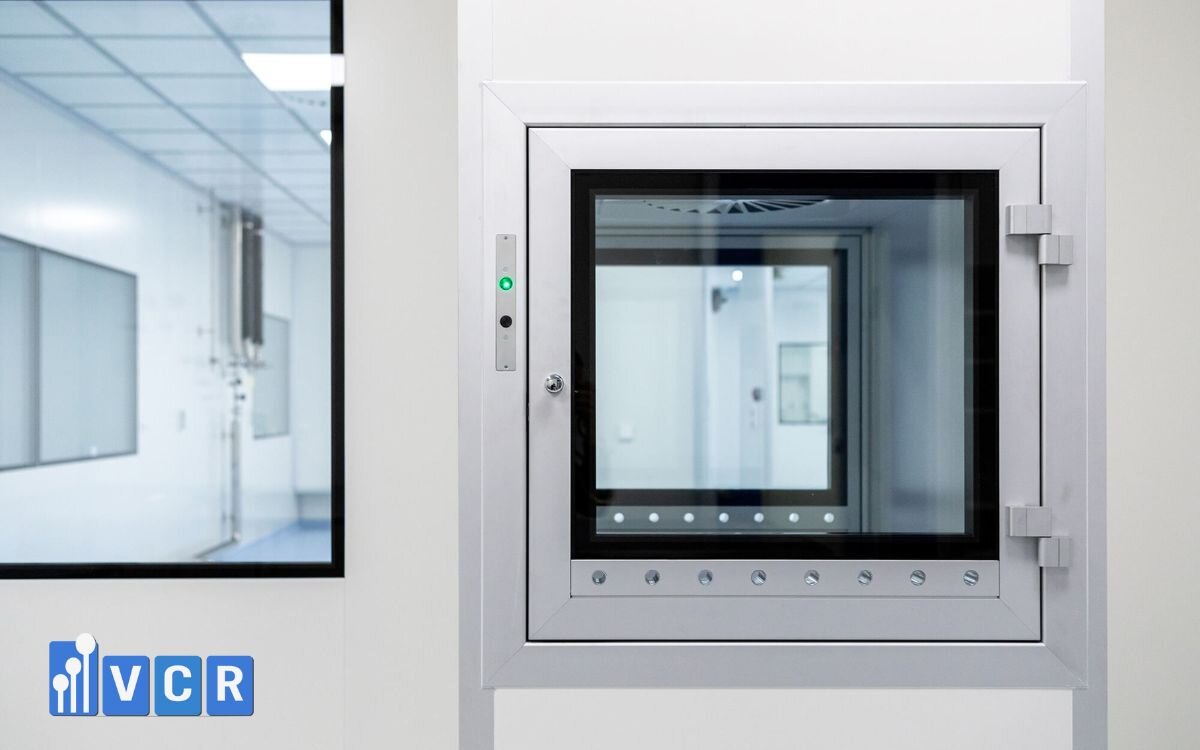
3. High-Risk Material Transfer Zones
Critical areas such as weighing rooms, filling stations, or aseptic packaging lines demand stringent contamination control.
Electronic Pass Boxes ensure:
- Only one door can be opened at a time
- Alerts if procedures are violated
- Optional integration with HEPA filtration, UV disinfection, or circulating sterilization
These features significantly reduce cross-contamination between clean and ultra-clean zones.
5. Common Mistakes When Selecting a Pass Box
Choosing the wrong type of Pass Box can lead to wasted investment, poor cleanroom performance, and non-compliance with GMP standards.
Here are three frequent mistakes many companies make:
1. Installing a Mechanical Pass Box in a Weighing Area
- Issue: Weighing rooms require high control over cross-contamination and pressure differentials.
- Risk: Both doors may be opened simultaneously if operators fail to follow procedures, violating GMP.
- Solution: Use electronic Pass Boxes with interlock and alarm features for unauthorized operations.
2. Choosing an Electronic Pass Box for a Low-Usage Area
- Issue: Some areas transfer materials only a few times per day, making expensive electronic units an inefficient investment.
- Solution: In such cases, mechanical Pass Boxes are more suitable, easier to maintain, and cost-effective.
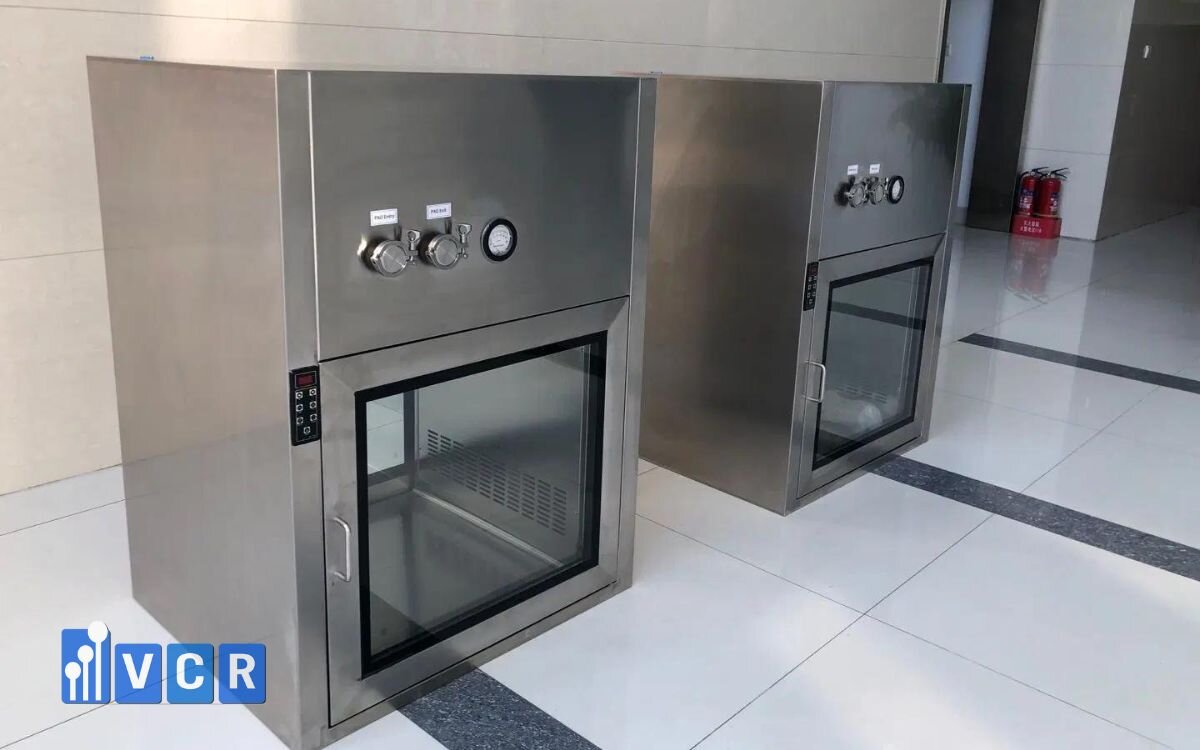
3. Ignoring Compatibility with Existing Interlock Systems
- Issue: Some facilities already have centralized interlock or access control systems, yet they choose Pass Boxes that lack digital communication capabilities.
- Result: The equipment cannot integrate, leading to system errors or complete replacement.
- Solution: Before purchasing, confirm with your technical team:
- Supported communication signals (e.g., dry contact, RS485)
- Power supply compatibility
- Interfacing capabilities with central management systems
See more: Latest price list of Passbox used in medical clean rooms
6. Frequently Asked Questions
1. Can a mechanical Pass Box be upgraded to an electronic one?
Yes. However, the upgrade requires:
- Replacing the mechanical lock with an electromagnetic one
- Installing a stable power supply
- Adding control panels and interlock circuitry
Note: Upgrades are only advisable if the Pass Box is in good condition and made of compliant stainless steel materials.
2. Can an electronic Pass Box operate during a power outage?
It depends on the model. Some electronic Pass Boxes are equipped with emergency release modes or mechanical backup locks, allowing manual operation when power is lost.
Recommendation: For facilities prone to outages, consider models with built-in UPS or dual lock mechanisms.
3. How often should an electronic Pass Box be serviced?
Routine maintenance is typically recommended every 6 months, covering:
- Checking control circuits and interlocks
- Cleaning filter meshes (if HEPA is installed)
- Testing UV systems and door sensors
- Verifying connection with interlock or access control systems
Some manufacturers may suggest different schedules based on operating conditions.
4. Do electronic Pass Boxes support sensor integration?
Yes. Many advanced models support the integration of features such as:
- Door open/close sensors
- Operational status indicators
- Recirculating HEPA or ULPA filters
- UV disinfection systems
- Status displays and event log recorders
Depending on your industry, you can request customized configurations from the manufacturer.
7. Need Help Choosing the Right Pass Box? VCR is Here to Support You
Selecting between a mechanical and electronic Pass Box is not just about price—it requires careful evaluation of:
- Cleanroom control requirements
- Compliance level with GMP or ISO
- Actual usage frequency
- Integration with interlock or central management systems
The technical team at VCR - Cleanroom Equipment is ready to:
- Analyze requirements based on industry (Pharma, Cosmetics, Food, Electronics…)
- Recommend optimal model, size, and configuration
- Provide transparent pricing and customized solutions for your budget
Contact us today for a 1:1 technical consultation or to receive the latest Pass Box catalog.
Hotline: 090.123.9008
Email: [email protected]
Website: https://passbox.vn/
Diep VCR




